Jordan Field School

Jordan Field School offers the opportunity to learn aspects of cultural heritage management, conservation work, archaeological and anthropological fieldwork practices, and the rich history and culture in the country of Jordan.
Check back soon as this page is updated whenever we get new information.
Participants can choose to participate for one, two, or three weeks:
- June 8-15, 2024 (approximate) - Decapolis Tour
- June 15-22, 2024 (approximate) - Cultural Heritage Fieldwork
- June 22-29, 2024 (approximate) - Conservation Training at Petra
* students taking courses will need to choose two or three weeks based on the number of credits and courses selected.
Madaba, Jerash, Umm Qais, Abila, Capitolias, Pella, Ajloun, Iraq Alameer, Hesban, Petra, Shobak, Little Petra, Wadi Rum, and more!
The following are the courses offered as a part of the tour package. Students will choose 6-9 credits depending on the number of weeks chosen and the student's needs. Some courses may only be available in conjunction with specific weeks. Please contact Dr. Hatfield stacie@andrews.edu or Ms. Bradfield bradfiee@andrews.edu for assistance in selecting courses. Those joining the tour as guests (without taking courses) will not need to register for courses.
- ANTH496 Fieldwork in Anthropology or Archaeology (1-4 Credits)
- ANTH440 Top: Cultural Heritage Conservation (1-3 credits)
- ANTH478 Archaeological & Ethnographical Perspectives on the Middle East (3 credits)
- RELG360/ANTH440 Top: Islam & Muslims in Contemporary Society (3 credits)
- ANTH455 Ethnography (3 credits)
Participants' cost will depend on the the length of time and number of credits chosen. Those not taking courses can choose one, two or three weeks. Students selecting 6 credtis can do two or three weeks and those taking 9 credits will need to participate for all three weeks.
- With academic credit:
- 3 weeks/9 credits = tuition + $750 tour fee
- 3 weeks/6 credits = tuition + $3600 tour fee
- 2 weeks/6 credits = tuition + $1200 tour fee
- Guests Participants (taking no classes): TBD
- 1 weeks = $3000
- 2 weeks = $4300
- 3 weeks = $6000
Students may apply most subsidies, grants, loans etc. Please contact your financial advisor for specific details on what your financial aid will cover.
Cost covers transportation within Jordan, lodging in 2-3 person rooms (individual beds), 2-3 meals per day as listed in the itinerary, all activities listed on the itinerary with tour guides and entrance fees, visa costs, basic travel insurance, and academic credit. The cost does not include international flights and any personal costs such as medications, souvenirs, additional activities, additional meals etc. Our office can make flight bookings for an additional charge.
If you have any questions or would like to sign up, please contact:
Erica Bradfield at bradfiee@andrews.edu or
Dr. Stacie Hatfield at stacie@andrews.edu or stop by our offices in the
School of Social & Behavioral Sciences, Buller Hall 211
Activities listed are for the full three weeks - participants beginning/ending dates will vary based on selected weeks. Click on each day to see more details.
Transfers provided from the Amman Airport to the Salome Hotel in Madaba.(Contact us for arrangements to arrive earlier)
Included Meals: Dinner
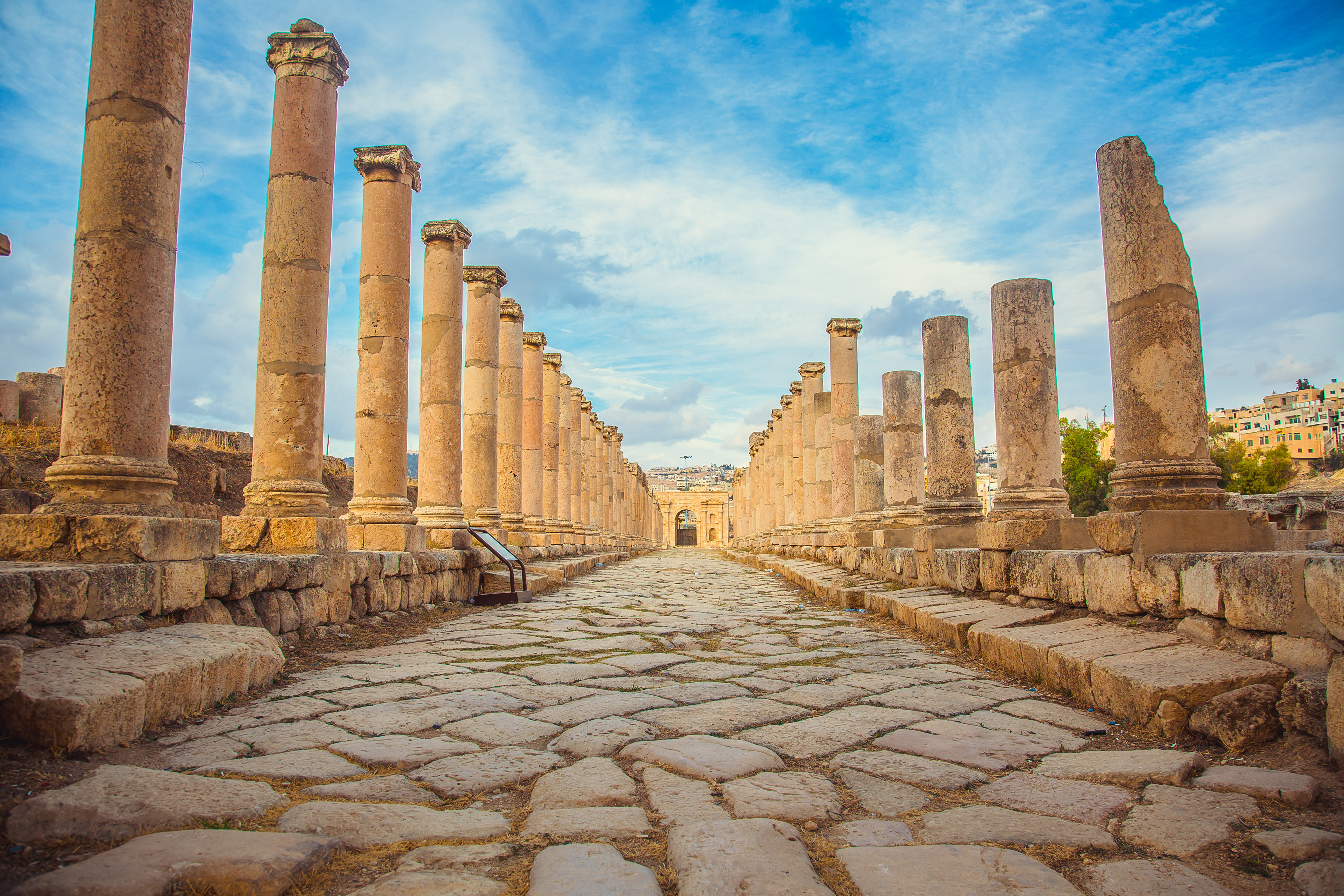
Jordan's largest Roman site, Jerash was once the Greek city of Gerasa before being part of the Kingdom of Judea and then the Roman empire. The ruins include Hadrian's arch, built in AD129 in honor of Emperor Hadrian; a hippodrome which hosted chariot races; the forum lined with Ionic colums; a temple to Zues; theatre with a capacity for 5000 spectators; the cardo maximus, still paved with original stones, rutted by chariot wheels; a small museum and more.
Included Meals: Breakfast, Lunch, & Dinner
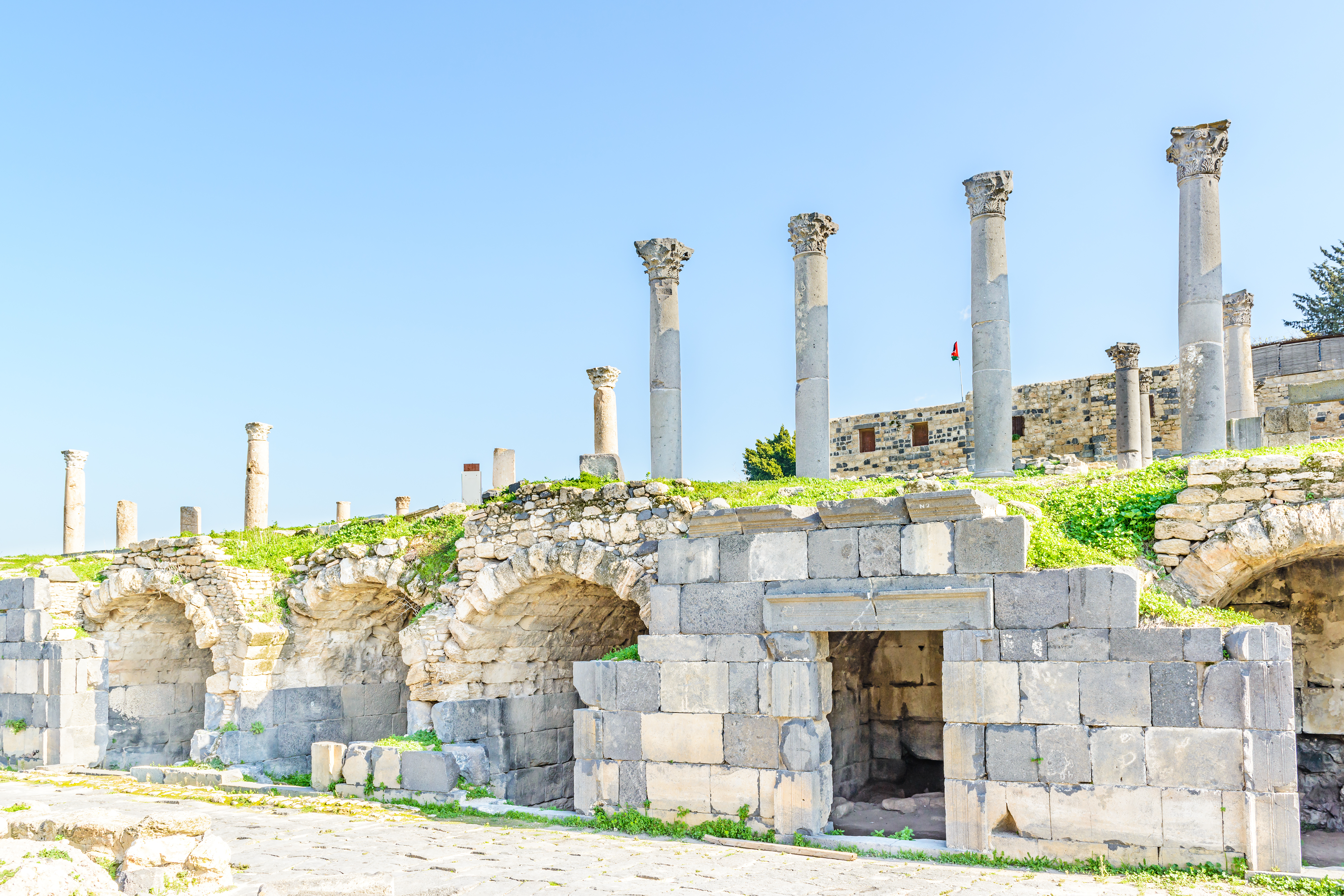
Believed to be the site where Jesus sent the demons into swine, Gadara (modern day Umm Qais) served as a military colony for the greeks before being taken by the Hasmoneans, Nabateans, and then Romans. As part of the Roman Decapolis, Gadara worked with neighboring decapolis cities Adraa (Dera'a, Syria) and Abila (Jordan) to create a 170km aqueduct tunnel system which supplied the cities with water. The system represents one of the most significant hydro-engineering accomplishments of the ancient world. In the Early Islamic period the site became known as Mukais, meaning border place, which gradualy became Mkeis, then Um Keis, and finally Umm Qais. After visiting the archaeological site and lunch, we'll participate in community activities in the area.
Included Meals: Breakfast, Lunch, & Dinner
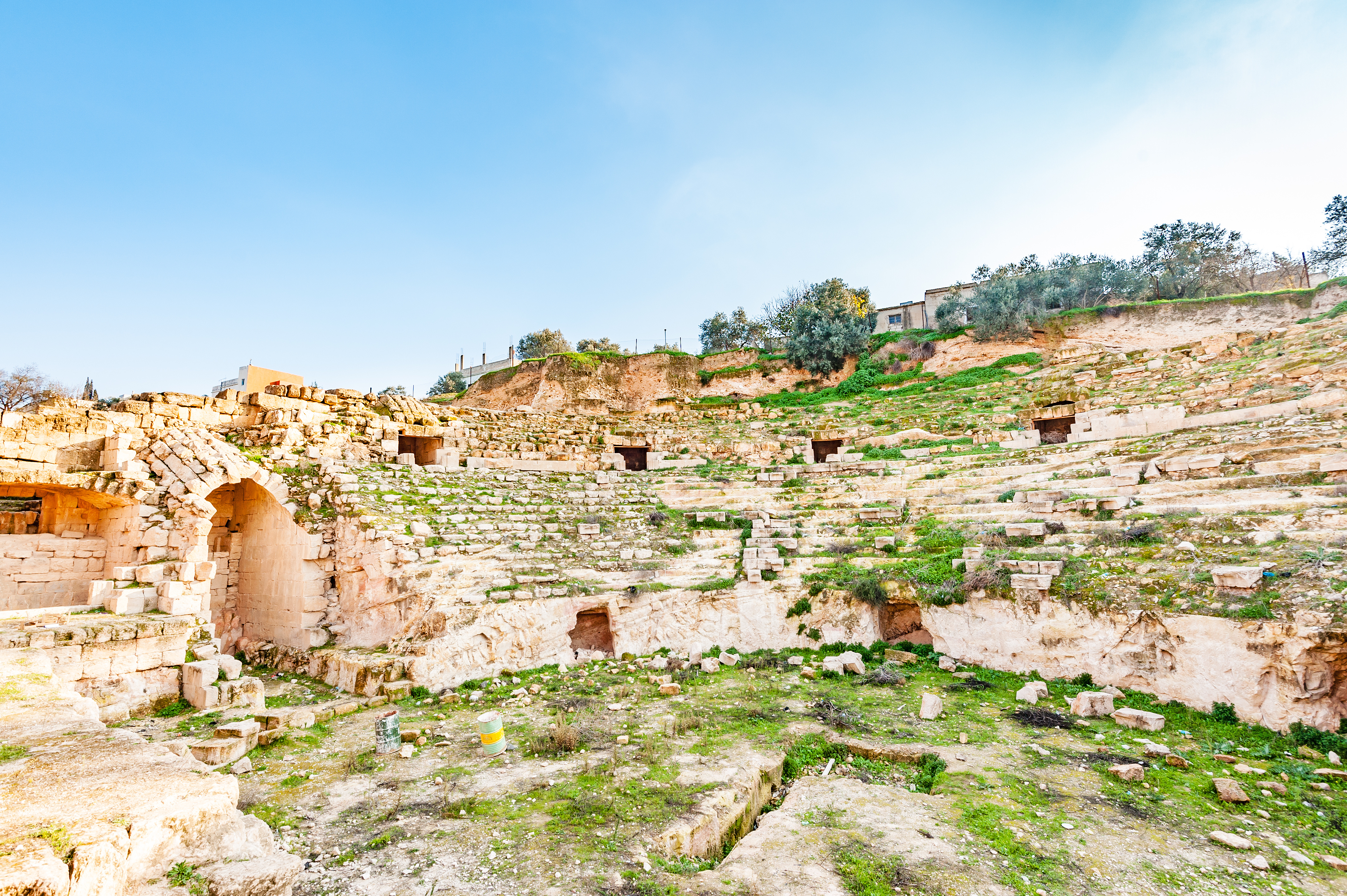
Abila, a city of the decapolis, thrived during the Roman and Byzantine periods before experiencing periods of distuction and abandonment by conflict or earthquake, before being completely abandoned in the 10th or 11th century AD.
Capitolias, founded as a planned Roman city, was settled extensively and grew in importance during the Roman, Byzantine and the early part of the Umayyad period. Most of the remains of the city sit under the modern day Beit Ras but remains of the theatre, an aqueduck, reservoirs, a Roman cemetary, and paved roads have been excavated.
Included Meals: Breakfast, Lunch, & Dinner
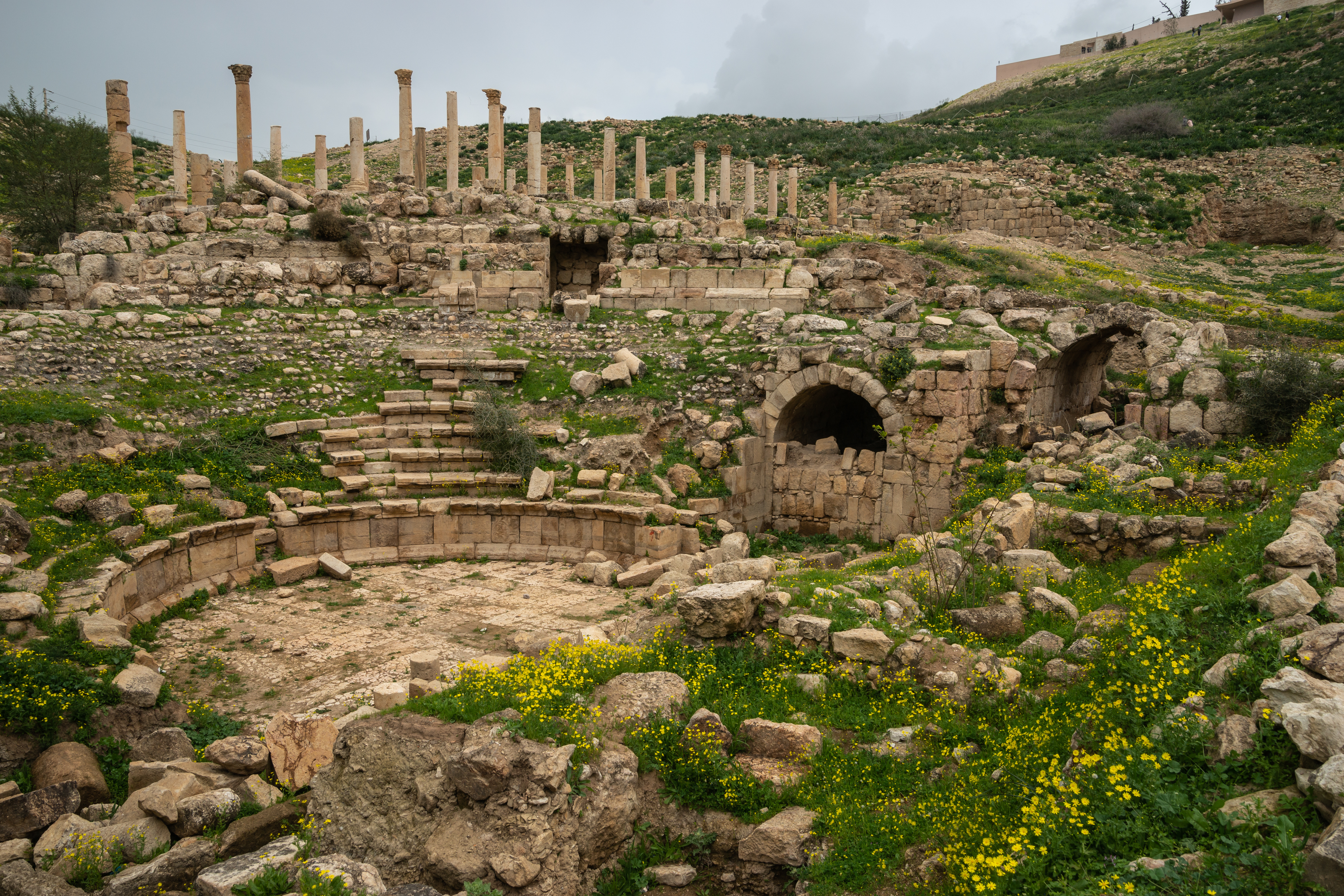
One of the oldest continuously occupied cities of Jordan, Pella grew to become regionally influential as a city of the Decapolis but expanded to its largest size in the Byzantine period. The sites decline began in the Early Islamic period when it was devastated by the 749 Galilee earthquake. Though still inhabited and somewhat rebuilt, the site never returned to its Byzantine size.
Included Meals: Breakfast, Lunch, & Dinner
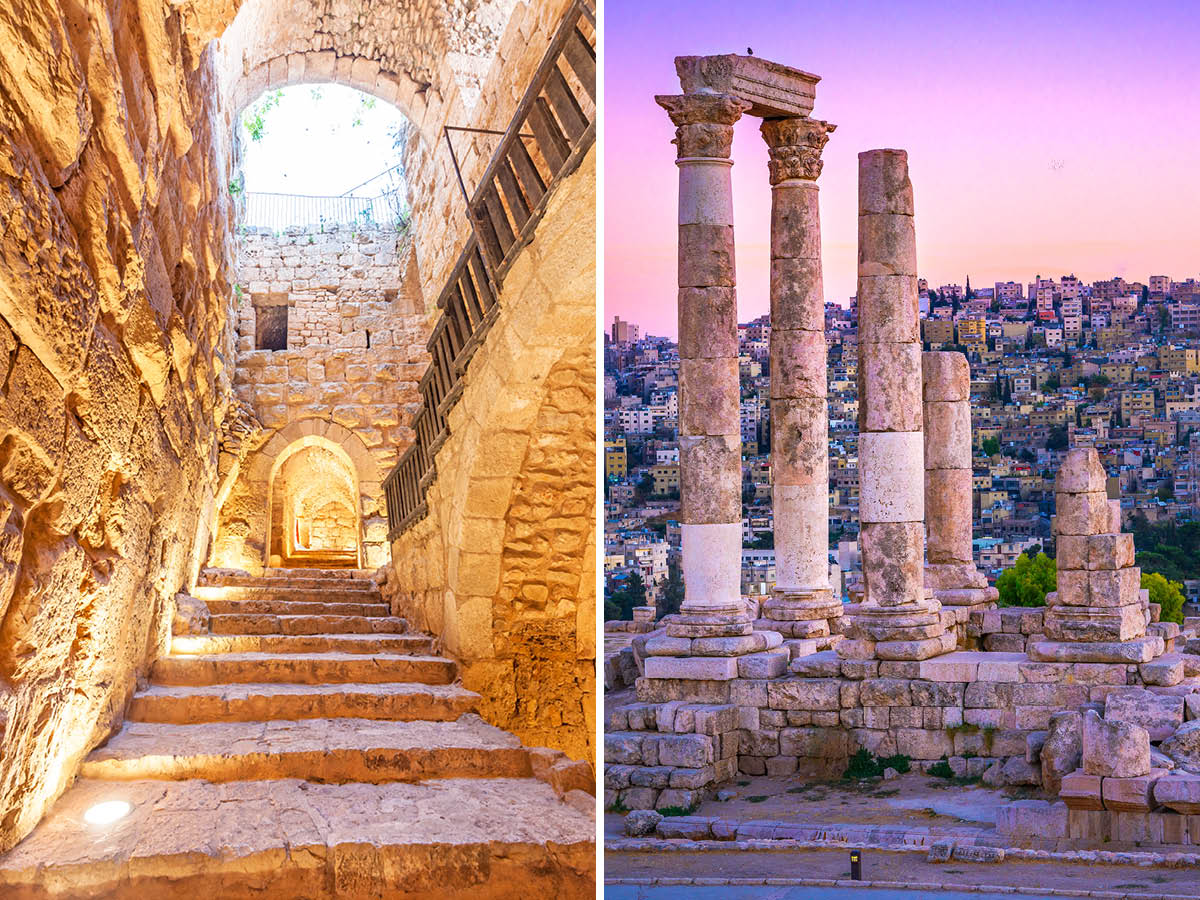
Ajloun Castle, known in medieval times as Qal'at-ar-Rabad, is a 12th century Muslim castle built by the Ayyubids then enlarged by the Mamluks. Built on the site of an old Byzantine monastery, Ajloun controlled traffic along the road connecting Damascus and Egypt. The castle protected the Ayyubids against Crusader incursions as well as protecting the development and control of the iron mines of Ajloun. After being partially destroyed by the Mongols in 1260 AD, the castle was cleaned and restored by the Mamluks and used as a storehouse for crops and provisions.
After exploring the castle, we'll continue to the Amman Citadel and Roman Theatre. Amman served as the capital of the Ammonite Kingdom as Rabat Aman before being renamed Philadelphia in the 3rd century BC before becoming one of the decapolis cities in the 1st century. The Rashidun Caliphate later renamed the city Amman in the 7th century AD. Located on top of Jebel Al Qala'a and overlooking the old city, the Amman citadel is a mix of ruins from various groups and time periods and an impressive view over downown Amman.
Dating back to the 2nd century AD, but still used for performances today, the three tiered Roman Theatre seats around 6000 people.
Included Meals: Breakfast, Lunch, & Dinner
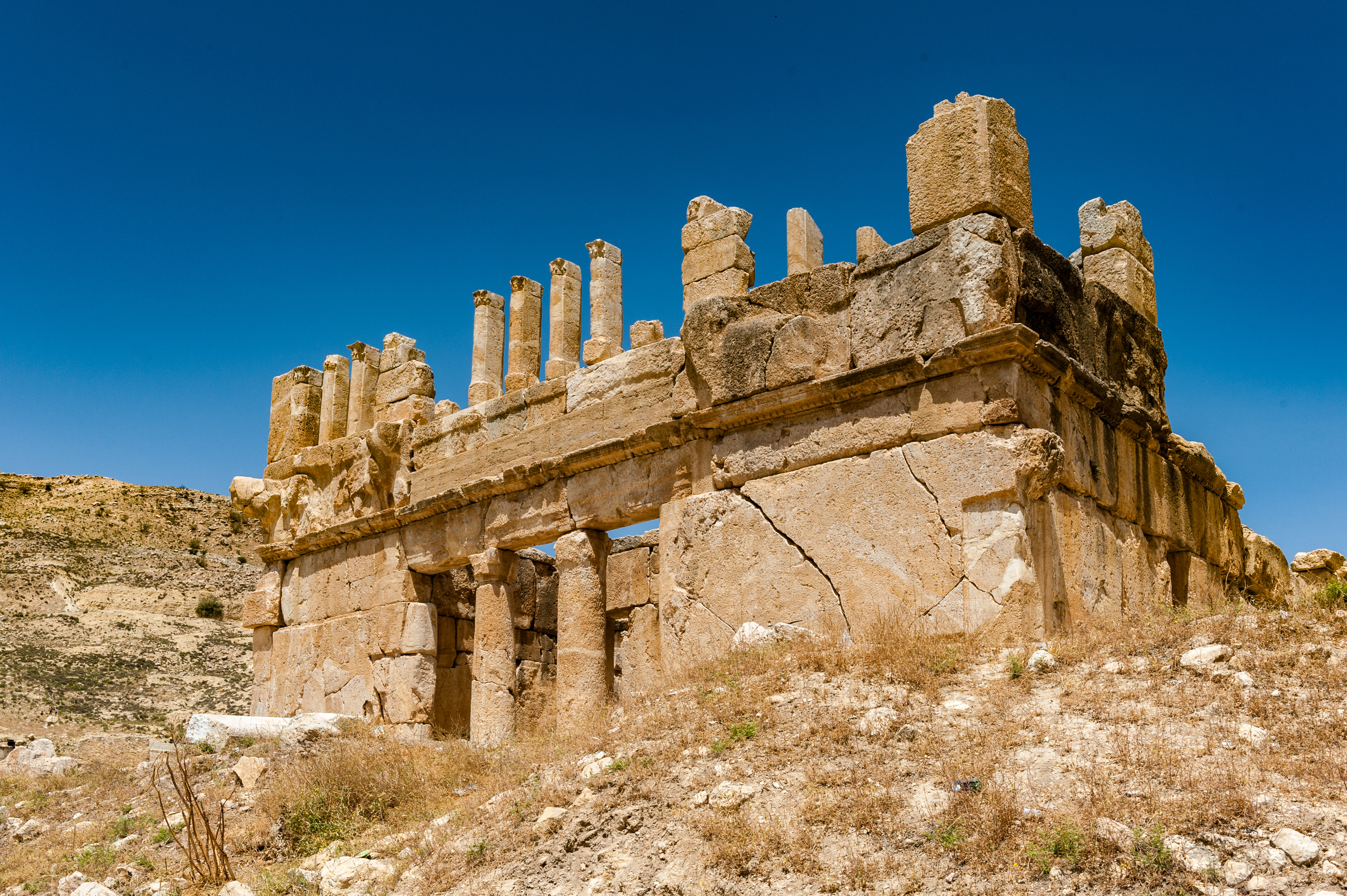
Hesban, believed to be the biblical site of Heshbon, sits atop a hill overlooking the Madaba Plains. First excavated in 1968 by Dr. Siegfried Horn, the team's goal was to establish whether Tell Hisban was the biblical site of Heshbon. Over the course of several excavations, layers from 21 different occupations of the site were discovered and led to a much broader analysis of the site and it's histroy.
Translating to "caves of the prince" in Arabic, Iraq al-Amir is home to 10+ inhabited caves and the ruins of an Ozymandian castle. The caves include inscriptions in early Hebrew spelling "Toviyah" a Hebrew name which is thought to be a reference to the Tobiad family. Nearby sits the castle, built by Hyracanus, the head of the Tobiad family, and the governor of Ammon in the 2nd century BC.
Included Meals: Breakfast, Lunch, & Dinner
Those arriving or departing will be provided transportation to/from the airport. Participants staying on will have free time or time to complete class assignments.
Included Meals: Breakfast &/or Dinner
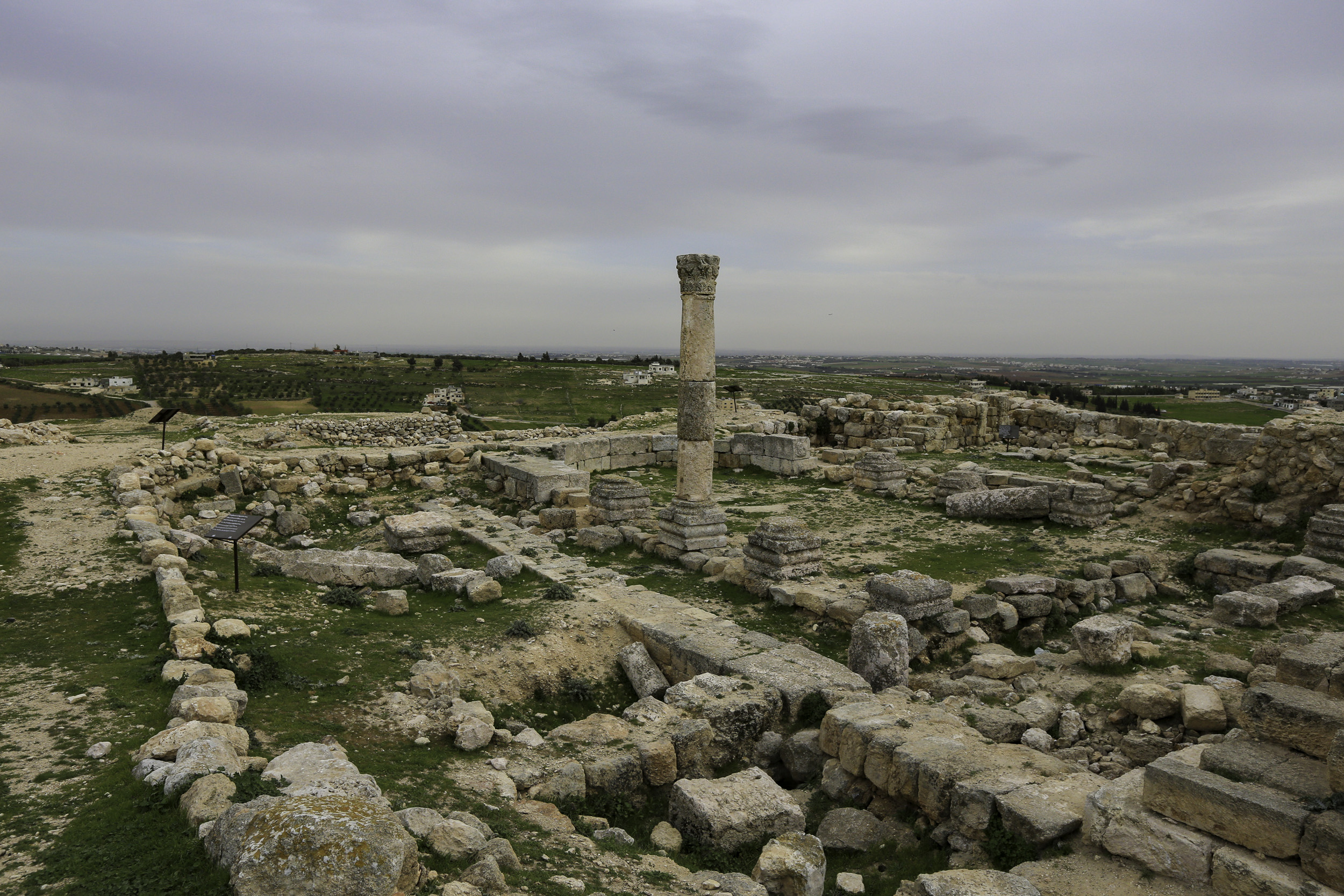
Participants will help prepare and facilitate the Hesban Heritage Festival, part of the Hisban Cultural Heritage Project which engages the local community in caring for and attracting visitors to the Tall Hisban archaeological site.
Included Meals: Breakfast, Lunch, & Light Dinner
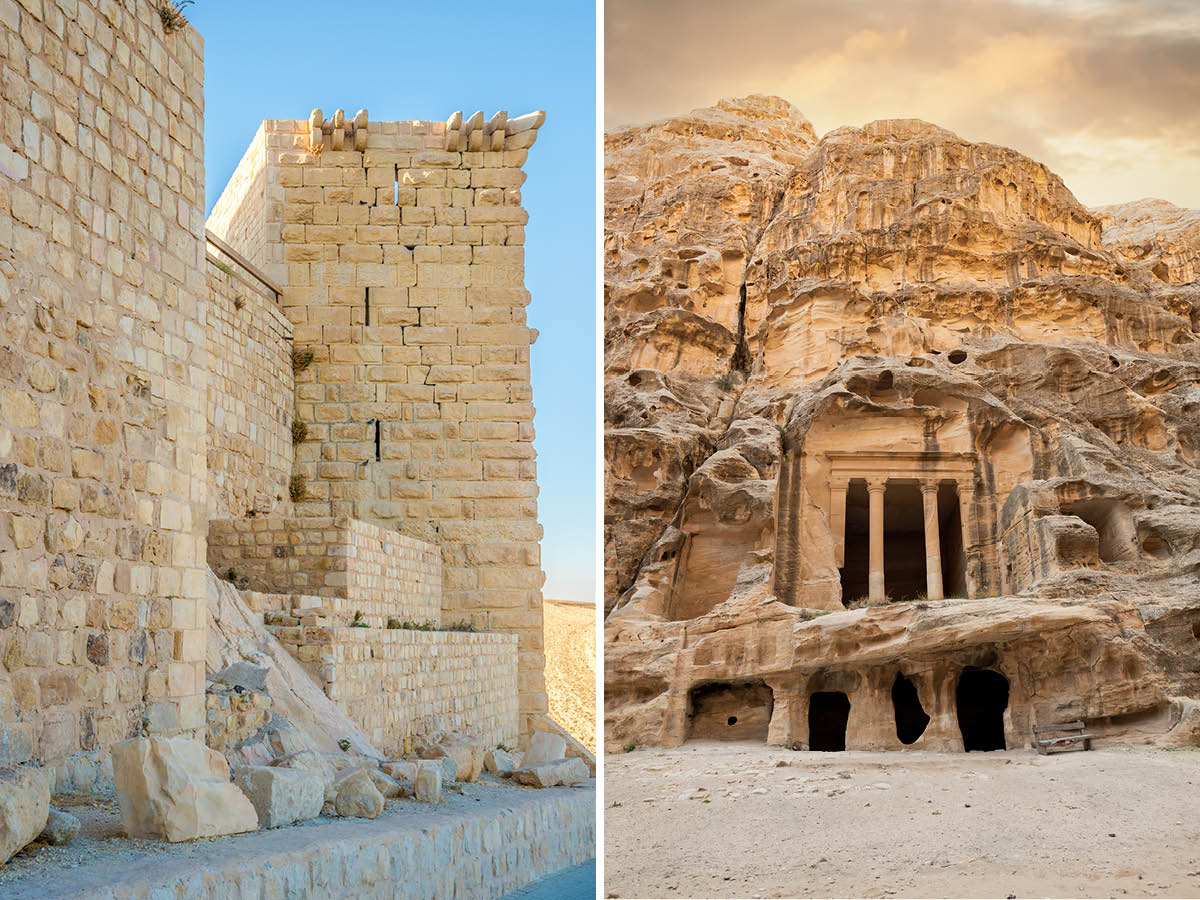
Shobak Castle was built by crusaders in 1115 AD as a defensive stronghold on the main passage between Egypt and Syria. The crusaders sucsessfully held the castle and taxed travelers until it was beseiged for almost two years before falling to the Ayyubids who held it until 1261 when the Mamluk stormed the castle. Most of the construction visible today is from the Mamluk renovations.
Little Petra, or Siq al-Barid "the cold canyon", is a Nabataean site carved into the walls of sandstone canyons. Believed to be a suburb of Petra, the complex is throught to have housed traders from the Silk road. The name "cold canyon" comes from the entrance through a canyon whose high walls and orientation prevent direct sunlight. The canyon opens up in several wider areas with carved dwellings and other spaces.
Included Meals: Breakfast, Lunch, & Dinner
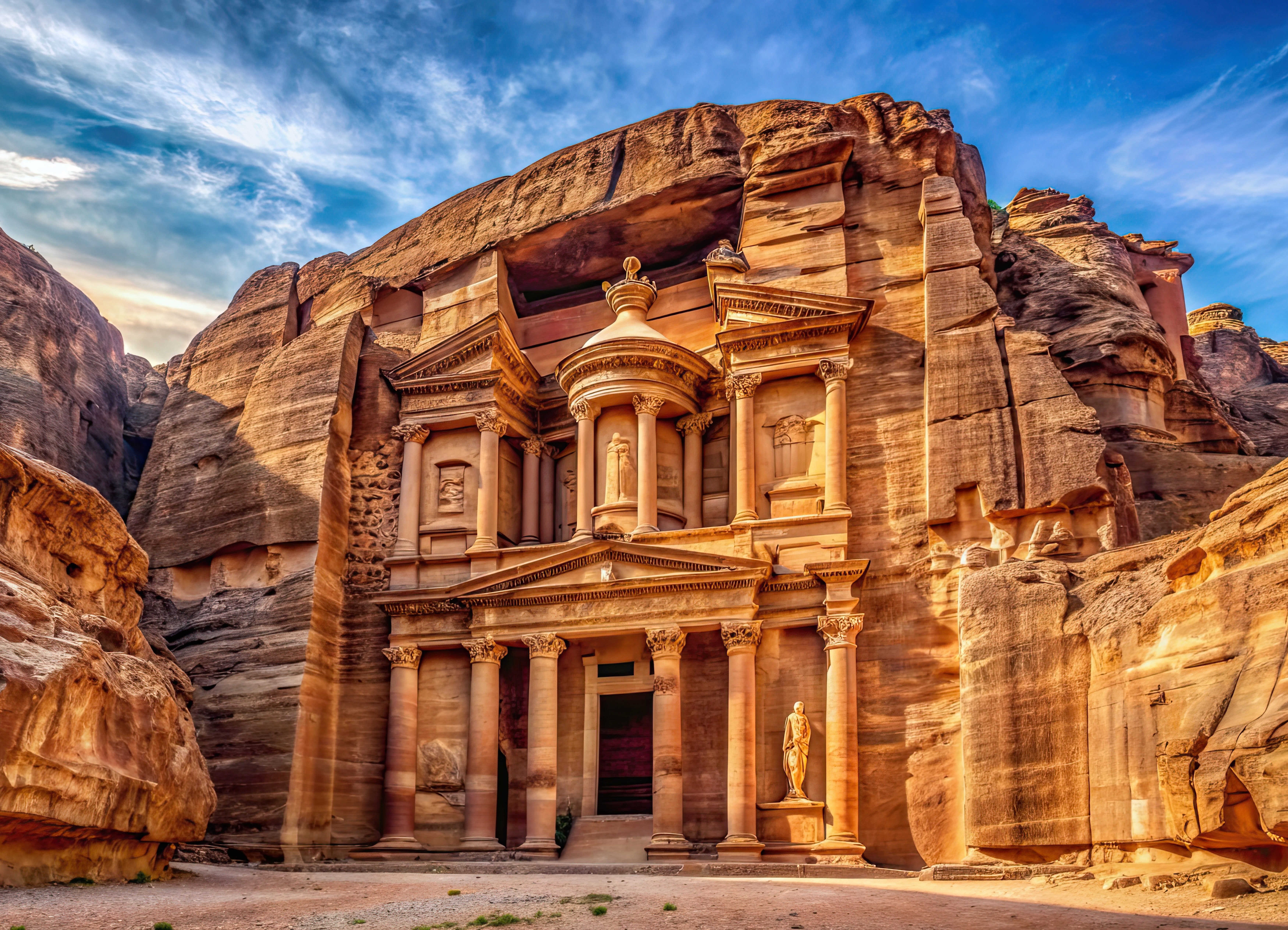
Originally known as Raqmu, Petra is famous for its rock-cut architecture and water conduit systems. Petra became the captial city of the Nabataean Kingdom in the 2nd century BC and served as a major regional trading hub due to the proximity to incense trade routes. The Nabataeans were skilled in agricultre, stone carving, and rainwater harvesting. Their familiarity with living in barren desserts helped them to defend their territory against enemies. At it's peak in the 1st century AD, Petra was home to an estimated 20,000 inhabitants. After Nabataea fell to the Romans in 106 AD, Raqmu was renamed Arabia Petraea and declined in importance as sea trade routes emerged. It was abandand by all but a handful of nomads in the early Islamic era and remained 'undiscovered' by the western world until 1812.
Included Meals: Breakfast & Dinner
Transfers to/from the airport for those departing/arriving. Those staying on will begin week 3 activities.
Included Meals: Breakfast
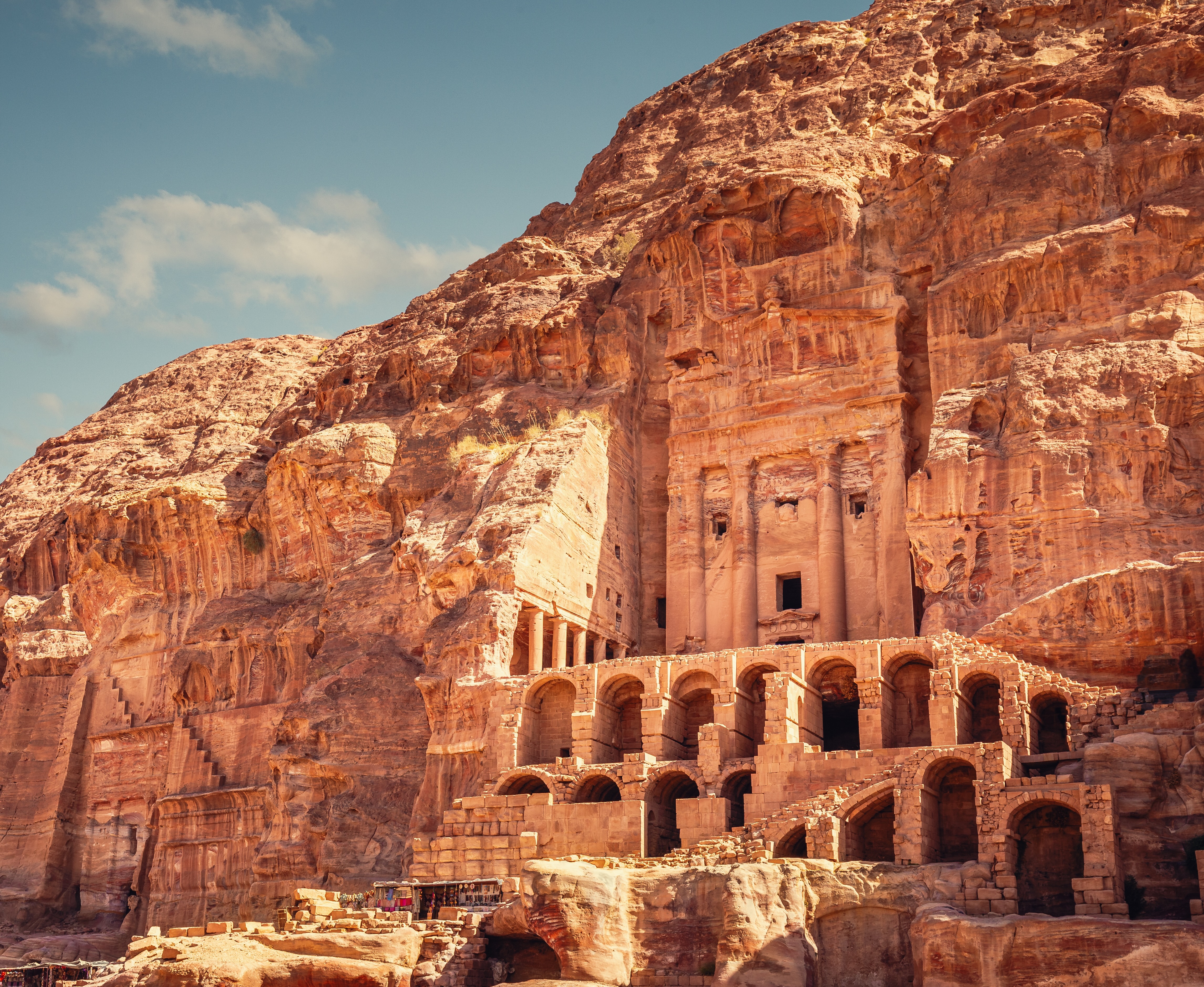
Participants will recieve training and participate in various conservation methods at Petra with SELA, an organization which provides archaeology and conservation training in Jordan and our hosts for the tour.
Included Meals: Breakfast, Lunch, & Dinner
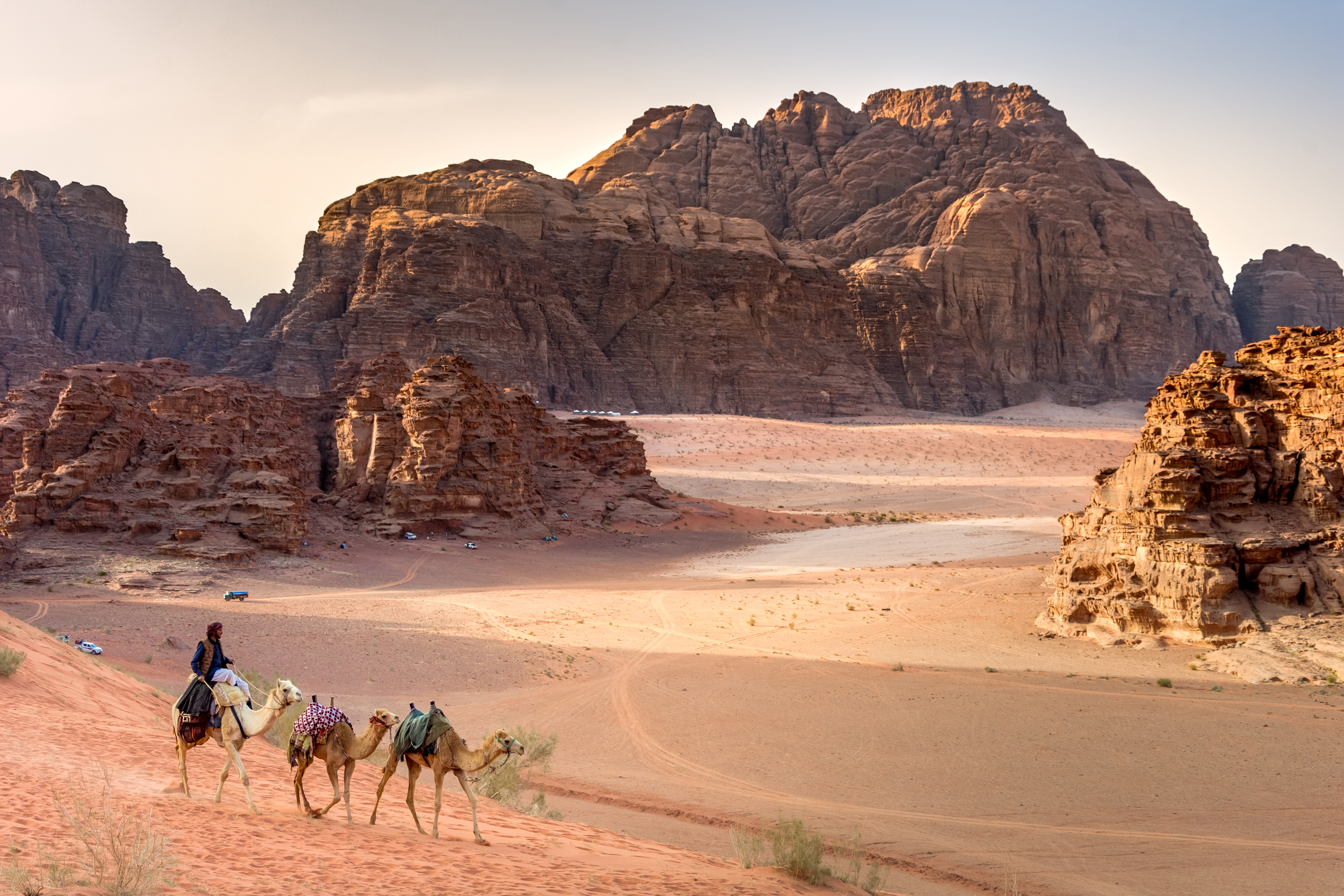
Friday afternoon and Saturday morning will be spent exploring Wadi Rum with an overnight adventure in the Jamal Rum Bubble tents. Described by Lawrence of Arabia as "Vast and Echoing". Wadi Rum is a desert landscape home to several Bedouin tribes and a variety of desert wildlife. Saturday afternoon, we will drive back towards Amman.
Included Meals: Breakfast & Dinner
Participants will be transfered to the airport for Saturday night or Sunday flights.
Included Meals: varies based on flight times
Check back soon as this page is updated whenever we get new information.


